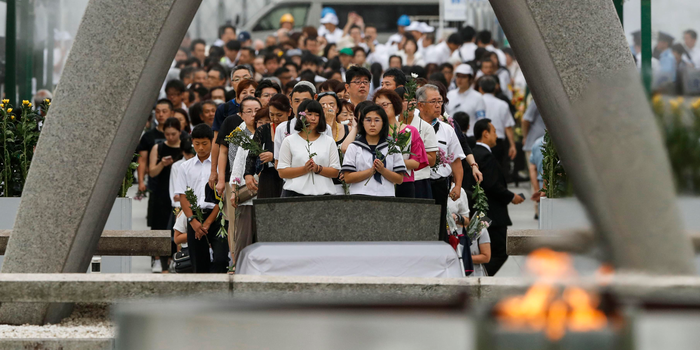It has been 79 years since the United States dropped atomic bombs on Hiroshima, Japan, on August 6, 1945, and on Nagasaki three days later on August 9, during the Pacific battles of World War II.
On August 6, 1945, at 08:15, the US “B-29” type plane dropped the bomb named “little boy” on Hiroshima, where 255 thousand people lived.
The uranium-added bomb with the force of 13,000 TNT, which destroyed 70 percent of Hiroshima, leveled everything in an area of 1.5 kilometers in diameter. More than 60,000 of the 90,000 buildings in the city were destroyed.
While the bomb’s center generated a temperature of 3,000 degrees Celsius, 80,000 people died in the first phase, and 200,000 people died towards the end of 1945.
Many people died before they could receive medical attention, and those who went to Hiroshima to help died from exposure to the radioactive rain caused by the explosion.
Deaths continued in the following years due to the radiation released by the bomb, and the effects of the atomic bomb lasted for many years.
The United States went down in history as the first country in the world to use an atomic bomb.
Nagasaki was hit 3 days after the first attack
The USA dropped the bomb called “Fat Man” on Nagasaki at 11:02 a.m. on August 9, 1945, three days after Hiroshima.
In Nagasaki, which had a population of 240,000 at the time, 74,000 people died and 36 percent of the city’s buildings were completely destroyed.
Japanese officials say 500,000 people died as a result of the atomic bombings
According to Japanese authorities, a total of approximately 500,000 people lost their lives as a result of the two atomic bombs dropped.
In Japan, the survivors of the atomic bombing were called “hibakusha”.
The bombs caused the hibakusha to suffer from long-term psychological distress, as well as illnesses such as cancer, deformities that are difficult to treat, and advanced burns and disabilities.
Atomic bombs were the “breaking point” of World War II
The atomic bombings are considered the “breaking point” of World War II.
Following the dropping of the atomic bombs, Japanese Emperor Hirohito declared his country’s “unconditional surrender” in his message on August 15, 1945, officially ending World War II.
The atomic bombs that caused the deaths of thousands of people also caused the extinction of all plants and natural life in the area of effect due to the heat they created.
The energy released after the explosion burned all structures, living things and nature in an area of approximately 2 square kilometers, and the effects of the nuclear particles released into the atmosphere can still be seen in the waters in the region today.
Traces of atomic bombs are kept alive in museums and monuments
Japan established the Hiroshima Peace Memorial Park and the Nagasaki Atomic Bomb Museum in two cities to ensure that the traces of the attacks are not forgotten.
Objects exposed to atomic bombs are exhibited in these facilities, which were established to draw attention to the consequences of nuclear attacks.
Witnesses to the atomic bomb attacks are also hosted as speakers in these facilities.
The Atomic Bomb Dome in the Peace Memorial Park in Hiroshima carries the traces of the nuclear bomb to this day.
The Dome, also known as the Hiroshima Peace Memorial, was preserved as its original without being renovated after the explosion and took its place on the UNESCO World Heritage List in 1996.
The Hiroshima Peace Memorial Park hosts at least 1 million visitors annually, and the Nagasaki Atomic Bomb Museum hosts approximately 700,000 visitors.
90 percent of the world’s nuclear weapons are in the inventory of the United States and Russia
According to the 2023 report of the Stockholm International Peace Research Institute (SIPRI), there are currently “nuclear weapons” in the stockpiles of 9 countries: the USA, Russia, England, France, China, India, Pakistan, North Korea and Israel.
Approximately 90 percent of the 12,512 nuclear warheads in the world are in the inventory of the United States and Russia.
